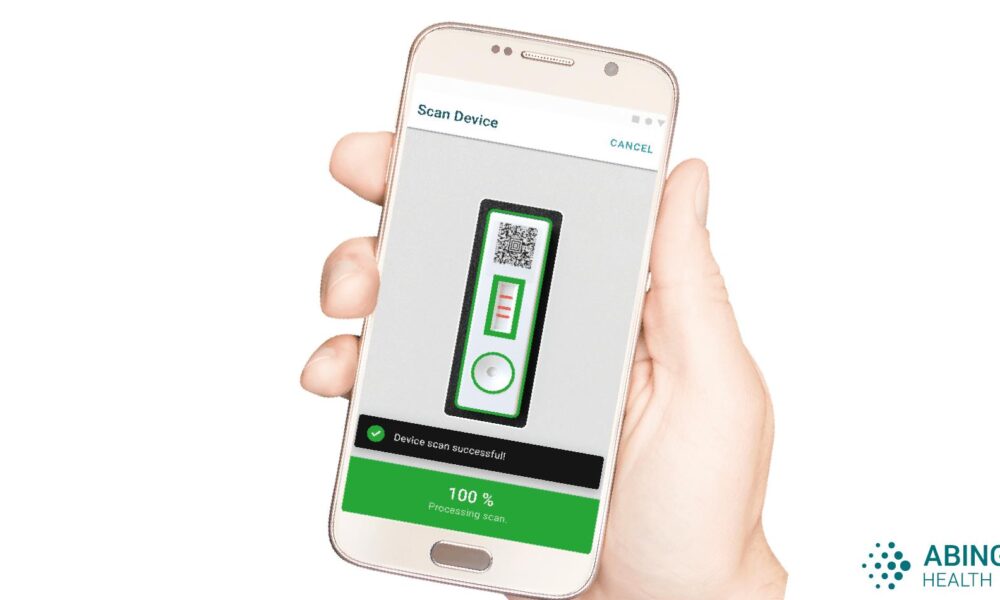In recent years the technology used in Smartphones and lateral flow tests have been combined to provide a number of industries with a rapid diagnostic and analytical tool that is user-friendly and provides stakeholders with easy access to data.
The benefit of using smartphone readers along with lateral flow technology means the assays can be tailored to meet individual users needs in a wide variety of testing scenarios.
In this article we will discuss:
- the versatility of the two technologies.
- the benefits of using the technologies in unison.
- why the use of Smartphones in lateral flow diagnostics is increasing.
Why use Smartphones and lateral flow tests?
The main reason for using the two technologies together is due to their versatility:
Lateral flow technology:
- Single target or multiplexed.
- Dipstick or house cassette format.
- Configured to work with multiple sample types.
- Can be used in conjunction with desktop or Smartphone readers.
Smartphone lateral flow reader technology:
- Functionality provided via downloadable Apps.
- Configured with readily available camera and connectivity technology.
- Can be set-up to work with single-target or multiplexed assays, or multiple strip assays.
The benefits of using the two technologies
End-users of rapid diagnostic tests, or any diagnostic test for that matter, want to use a test that produces results that are accurate and offer the desired level of sensitivity and reproducibility. At the same time, they want to be provided with a cost-effective testing solution that can be easily integrated into their workflow.
- Lateral flow tests are easy to use and portable
- Whether a single target or a multiplexed assay, lateral flow tests can be used by both diagnosticians and non-diagnosticians, whether working in the field, in a clinic or in a lab.
- Minimal training required
- Companies can supply approved home tests knowing workable results will be taken or incorporate the technologies into their services without a great deal of disruption.
- Results record and data sharing functionality downloaded via an App
- Preset algorithms and work-flows within Apps can be integrated with cameras and connectivity technology readily available in Smartphones.
- Discreet
- This is specific to home testing and mhealth: their compact nature means tests can be sent to someone’s home via the post and an App downloaded onto a Smartphone and can be utilised to send data to a doctor or clinician.
 Smartphones and lateral flow diagnostics offer certain functional benefits which may not be available otherwise. For example here are a few scenarios:
Smartphones and lateral flow diagnostics offer certain functional benefits which may not be available otherwise. For example here are a few scenarios:
- A patient or animal requires regular check-ups for a particular condition which involves testing daily. Via an App, the Smartphone notifies the user when to test, the Smartphone reads the lateral flow test then records the data allowing stakeholders to access the data so they can monitor the condition, offer advice or turn data into insight.
- A plant pathologist is working on a large arable farm in Africa, Australia or the USA and they need to test for a contaminant, record the result and map the location of a detected contaminant.
Increasing demand for data-driven mobile diagnostics
The world is a fast-paced and busy place, with people demanding commodities, solutions and remedies quickly: testing and diagnostics are no different. Of course, populations and demand put pressure on diagnostics and testing provision and therefore response needs to be swift, and accurate.

In addition, it is connective, accessible and efficient technology such as Smartphones that are enabling markets to have access to the best products and services. Also, a contributing factor is, because we’re a very connected world, markets are more knowledgeable and are aware of the latest trends and technologies.
Below are some of the reasons why markets are turning to using Smartphones and lateral flow diagnostics:
- Advancements in lateral flow technology
- Improvements in conjugation methods and techniques have increased the potential and acceptance of the technology across many industry sectors.
- Decentralisation of testing
- Streamlining diagnosis services and results-turnaround-times is one of the drivers for decentralising tests; rapid results, in-situ via lateral flow and Smartphone technology is aiding this.
- Time-saving
- Results, locations, dates, times or batches can be recorded easily and shared via an App instantaneously.
- Home test end-users can save time by reducing the need to visit a clinic or lab.
- Cost-effective
- Service providers can reduce turnaround times and equipment and labour costs, thus making costs cheaper for end-users.
- Access to Smartphones is widespread
- There are an estimated 2.5 billion Smartphones in circulation worldwide. So, gaining data from lateral flow test results via Smartphones is possible for almost a third of the world’s population.
In fact, there is a steady growth in lateral flow diagnostics using both desktop and mobile devices; we highlight the reasons for this in a series of guides called: What’s driving lateral flow diagnostics growth?
AppDx®
Many of the features and benefits of combining Smartphones and lateral flow tests was the reason why Abingdon Health launched AppDx®. AppDx® is a customisable lateral flow Smartphone reader App that utilises an intuitive user interface that can be cost-effectively adapted to meet the individual test requirements of assays already in the market or going through test development.

